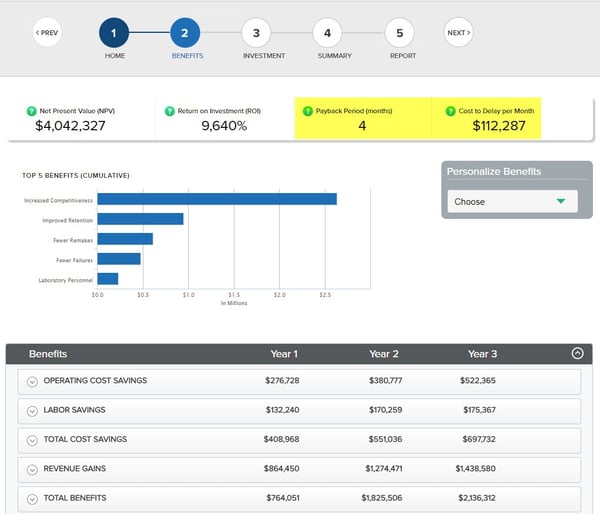
Presentation is everything, from food and fashion to thought leadership and value propositions. There’s a lot riding on how well your team articulates the customer’s problem and presents the value of your solution. When it’s done clearly, persuasively, and with a sense of urgency, buyers will take action quickly and decisively in your favor.
Here are three simple, yet effective, approaches that will light a fire under your prospect and accelerate a purchase decision.
1. Quantify the Cost of Inaction
Buyers often hesitate when making a financial commitment because they think doing nothing and maintaining the status quo doesn’t cost anything. This couldn’t be further from the truth.
Luckily, it’s easy to calculate how much the prospect is losing by not investing in your solution. Just divide the value your solution delivers by 12, and you can clearly demonstrate the monthly cost of inaction (or any other interval that has the most impact).
When prospects see that doing nothing is literally money down the drain, they’ll think about their situation with new sense of urgency. Suddenly, sealing the deal and moving forward to solve the problem makes more sense than continued indecision.
2. Demonstrate Payback to Minimize Risk
Every purchase carries perceived risk. The best way to overcome hesitation is to calculate the project’s payback period. This is usually expressed in the number of months before incoming cash flow exceeds the project’s costs.
Payback on technology investments continues to shorten, so be sure to include this metric in your sales discussions, especially when your calculations are backed up by the use of ROI tools. Payback is especially important to the CFO and members of the finance team, who use it to compare your solution to alternative investment opportunities.
Use buyer hesitation to your advantage by pointing out that if they start now, they’ll be ahead of the game two months from now. Your goal is to minimize any perception of risk by quantifying the payback period.
You can see the sample output from an ROI tool below or click here to learn more and see additional examples of ROI Tools.

3. Focus on the Biggest Impact
Every successful sales conversation should focus on the two or three most important value drivers for each prospect. Because a solution’s impact will vary from customer to customer, your sales team needs to dig into each unique situation and get to the heart of what’s driving the purchase.
Focusing on what’s most important enhances your influence with prospects. It demonstrates that you understand their issues, care about solving their problem, and have a targeted solution that truly meets their needs.
Back this up with financial justification that’s confidently calculated using ROI tools, and you’ve covered all the obstacles to closing the deal quickly and collaboratively.
Conclusion
How you talk about a customer’s problem can make all the difference. Use these three tips to get a stalled conversation back on track. And use your ROI tools to create a credible business case that’s solid enough to gain internal budget approval.
To determine whether ROI tools can work for your business, you can use our recently updated value calculator.








